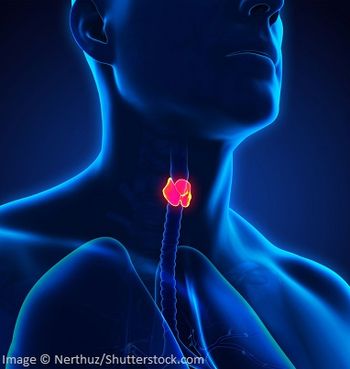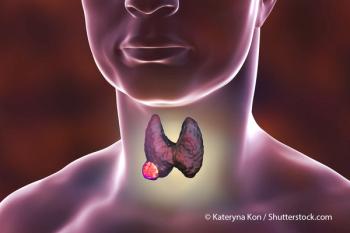
Pre-Op Assessment Could Help Define Thyroid Cancer Molecular Profile
Identifying certain characteristics of BRAF-positive and RAS-positive thyroid cancers may help define a molecular profile for the disease.
Researchers have identified certain characteristics of BRAF-positive and RAS-positive thyroid cancers that may help with improving preoperative risk assessment for suggesting a molecular profile for the disease.
Results of a small study
“While RAS and BRAF mutations appear to be the critical molecular processes underpinning most well-differentiated thyroid cancer, their clinical-sonographic-pathologic profiles differ dramatically,” wrote Sujay Kakarmath, MBBS, of the division of endocrinology at Brigham and Women’s Hospital and Harvard Medical School in Boston, and colleagues. “Our data depict these important associations, and provide helpful data as practicing clinicians are increasingly called upon to integrate molecular findings into clinical practice and deliver personalized care to their patients.”
Kakarmath and colleagues studied 101 consecutive patients with well-differentiated thyroid cancer. They compared clinical, radiographic, and pathologic findings from patients with either a BRAF (n = 71) or RAS (n = 30) mutation.
Sonographic evaluation of the tumors showed that RAS-positive nodules were significantly larger than BRAF-positive nodules (25 mm vs 18 mm; P = .04). BRAF-positive nodules were more likely to have concerning sonographic characteristics such as hypoechogenicity (79% vs 20%; P < .001) or irregular margins (46% vs 16%; P = .04). The researchers also noted evidence of extranodular extension and abnormal lymphadenopathy in BRAF-positive nodules.
Looking at fine-needle cytological findings, the researchers found that 69% of BRAF-positive nodules were classified positive for papillary carcinoma compared with 7% of RAS-positive nodules (P < .001). In contrast, 83% of RAS-positive tumors were cytologically indeterminate compared with 30% of BRAF-positive tumors.
Histologically, 96% of the RAS-positive papillary carcinoma malignancies were follicular variants; 70% of BRAF-positive malignancies were classical variants of papillary carcinoma.
Those tumors positive for BRAF were more likely to demonstrate extrathyroidal extension (P = .003), lymphovascular invasion (P = .02), and lymph node metastases (P < .001).
“Together, these data provide guidance for the practicing clinician as they evaluate patients with thyroid nodular disease, as BRAF and RAS mutations are the two most common molecular perturbations causing well-differentiated thyroid cancer,” the researchers wrote. “Nodules with worrisome sonographic features and either malignant or suspicious Bethesda cytology are more likely to prove BRAF-positive than RAS-positive, if malignant. In contrast, nodules with indolent sonographic findings and a preceding indeterminate cytology are much more likely to be RAS-positive than BRAF-positive, if malignant.”
Newsletter
Stay up to date on recent advances in the multidisciplinary approach to cancer.















































































